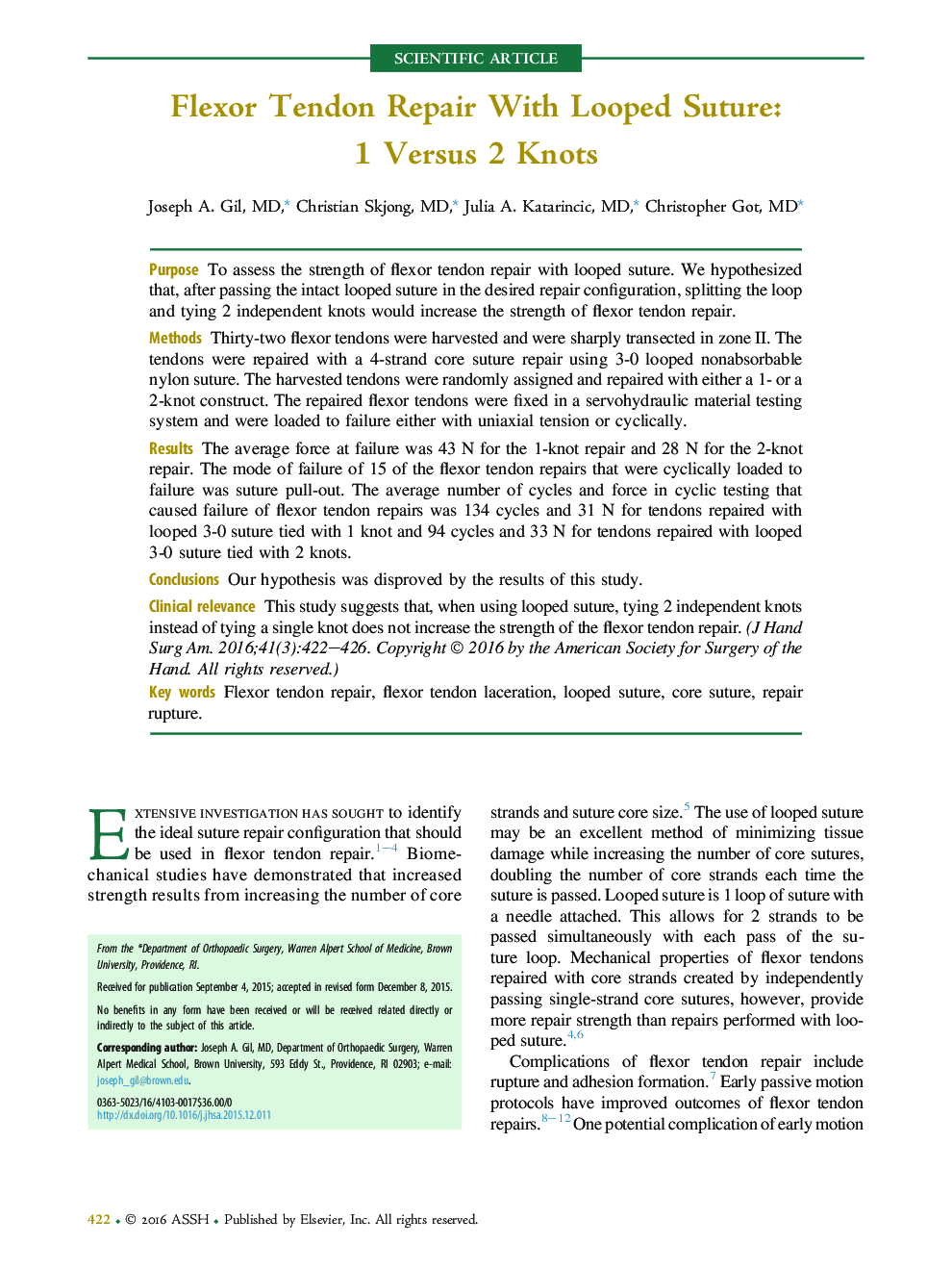| کد مقاله | کد نشریه | سال انتشار | مقاله انگلیسی | نسخه تمام متن |
|---|---|---|---|---|
| 4066147 | 1604346 | 2016 | 5 صفحه PDF | دانلود رایگان |

PurposeTo assess the strength of flexor tendon repair with looped suture. We hypothesized that, after passing the intact looped suture in the desired repair configuration, splitting the loop and tying 2 independent knots would increase the strength of flexor tendon repair.MethodsThirty-two flexor tendons were harvested and were sharply transected in zone II. The tendons were repaired with a 4-strand core suture repair using 3-0 looped nonabsorbable nylon suture. The harvested tendons were randomly assigned and repaired with either a 1- or a 2-knot construct. The repaired flexor tendons were fixed in a servohydraulic material testing system and were loaded to failure either with uniaxial tension or cyclically.ResultsThe average force at failure was 43 N for the 1-knot repair and 28 N for the 2-knot repair. The mode of failure of 15 of the flexor tendon repairs that were cyclically loaded to failure was suture pull-out. The average number of cycles and force in cyclic testing that caused failure of flexor tendon repairs was 134 cycles and 31 N for tendons repaired with looped 3-0 suture tied with 1 knot and 94 cycles and 33 N for tendons repaired with looped 3-0 suture tied with 2 knots.ConclusionsOur hypothesis was disproved by the results of this study.Clinical relevanceThis study suggests that, when using looped suture, tying 2 independent knots instead of tying a single knot does not increase the strength of the flexor tendon repair.
Journal: The Journal of Hand Surgery - Volume 41, Issue 3, March 2016, Pages 422–426